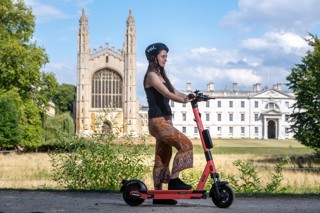An E-Scooter provider has developed an in-app test that can deter intoxicated riders from ‘drink-riding’ and encourage them to use alternative transport.
The test - which is now available for riders in some of TIER’s operating cities - has been developed to make sure that it addresses the behavioural changes that occur when alcohol is consumed.
It also comes shortly after research in Oslo found that four in 10 of all injuries on e-scooters involved intoxicated riders.
The test asks them to match the angle of their phone with an angle displayed on a screen. The rider will be asked to do this three times within a set time frame. If a rider passes all three screens within the allotted time frame, they will be able to take a TIER and if they fail, riders will be encouraged to use an alternative method of transport, providing reassurance that they will ride safely and responsibly.
Kate Barnes, head of safety and inclusion at TIER, said: “The safety of our riders and other road users is always our number one priority at TIER. By working with behavioural experts, our new in-app test provides yet another way to help riders stay safe.”
The test is just the latest innovative safety feature TIER has introduced into its app to encourage responsible riding and follows TIER’s partnership with the ride-hailing app FREE NOW which directs riders to book a taxi via the app if riders confirm they have been drinking.
TIER has also already introduced its industry-first Safety Pricing feature, which means riders in London are not charged when vehicles are stationary during trips, further discouraging reckless riding like speeding through red lights. Alongside in-app features, TIER e-scooters come with various leading safety features, including indicator lights, shock absorbers and a large front wheel.
TIER plans to support riders who fail the game by integrating the links of taxi companies or public transport options into the ‘fail screen’ of the app. The app could be integrated with a local taxi company and public transport authority, for example, to link riders to these services directly.





















Login to comment
Comments
No comments have been made yet.